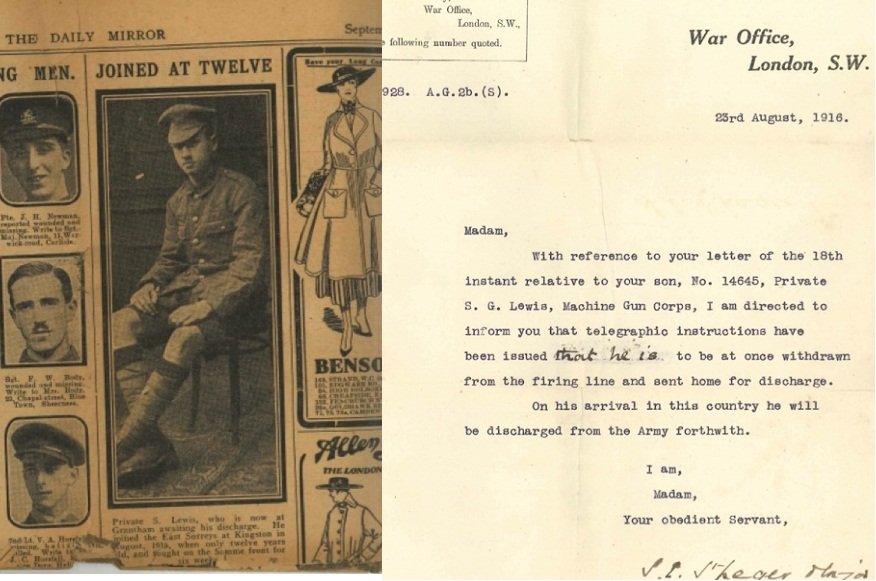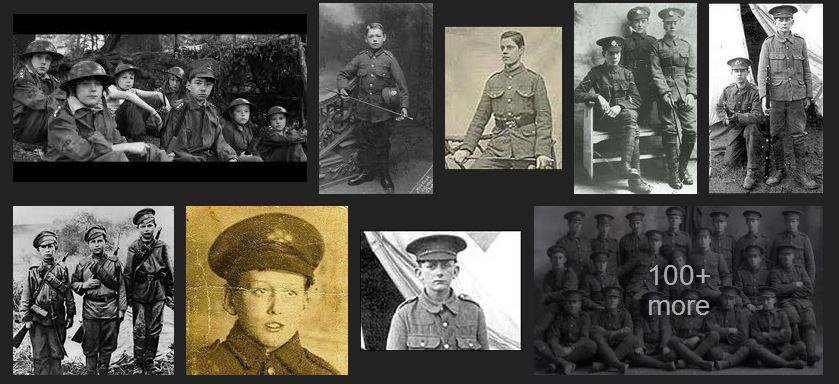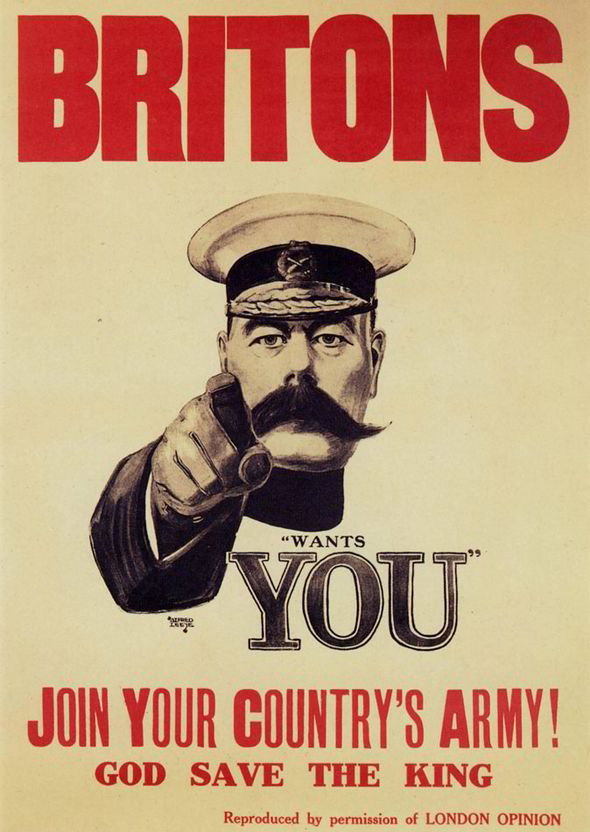|
Richard is one of the world’s leading historians of the First World War and he gave a fascinating talk on June 27th about boy soldiers in the conflict. He came to Wootton the day before the centenary of the assassination of Archduke Franz Ferdinand in Sarajevo, which helped trigger the conflict, and so the timing was highly appropriate.
During the course of an immensely informative and yet melancholy evening, he gave us startling details of how boys as young as twelve were motivated to bluff their way into a war of unimaginable horror. Despite the minimum age for front line service being 19, thousands of young boys were able to enlist successfully in the Army during the war, particularly in the period before the introduction of conscription in 1916. Many of them even stood on tiptoes and inflated their small chests as part of their determination to enter military service – and yet how the authorities allowed this to happen was largely a mystery until Richard, who has written 16 books on the war, embarked on his painstaking research.
As an illustration, he told us the story of Sidney Lewis – thought to be the youngest British soldier to fight in the war at just twelve years of age, but his identity had remained a secret for almost a century until the chance discovery of faded documents revealed his extraordinary story and his courage at the Battle of the Somme. On holiday from school, Sidney had decided to take his chance and signed up for the army in London, lying to the recruitment officer about his age and pretending he was several years older. “How a 12-year-old got into the British Army is really beyond belief,” Richard told us..

But Sidney was not alone - about 250,000 underage soldiers fought for Britain in the First World War. Richard has tracked down personal testimonies, as well as unpublished diaries and letters, which he used to illustrate for us extraordinary stories of heroism and sacrifice. Perhaps more than any group, it was young boys (children, really) who were caught up in the wave of patriotism and who wanted to fight for King and country.
Another example was Dick Trafford who – before his sixteenth birthday – had been gassed and wounded three times and went over the top with an eardrum burst during the heat of battle. Others, like Frank Lindley, seeking to avenge his dead brother, went into battle on the first day of the Somme when he was just sixteen. But it wasn’t only working class boys who were ushered into the forces – Richard told us of one young middle-class boy who, barely 16, became an officer in charge of a company of 250 men.
At the time, stories of young boys being recruited far below the minimum age, were buried in censorship and government control. As the presentation of a birth certificate was not required, many lied about their age, in some cases with the connivance of recruiting sergeants, who were paid a bounty per recruit. For example, said Richard, if a doctor were uncertain about a boy’s age, a sergeant would tell him to return after taking a walk around the block, by which time – miraculously - he had aged a couple of years.

Encouragement to enlist came from newspapers extolling the heroic actions of under-age soldiers, and also from members of local communities who actively encouraged and sometimes even pressured young boys to enlist. In some cases, boys from poor families enlisted with parental support because it was one less mouth to feed – in others, they gave false names and, despite mounting pressure to prevent it, this practice persisted.
Although many tenacious questions were asked in parliament, notably by the Nottinghamshire Liberal MP, Sir Arthur Markham, the most practical solution - the compulsory presentation of a birth certificate on enlistment - was never adopted. Parents could request their sons were withdrawn from the front, added Richard, but this solution was often only possible with the co-operation of their sons, and only after encountering extensive red tape.
In a truly melancholy interlude, Richard read out some heart-wrenching letters in which the father of a boy, killed in battle aged only 17 and his only child, wrote with amazing deference to Lord Kitchener, saying that the boy was merely a child and that he should never have been allowed to join the Army. Elsewhere, the sister of a boy at the front wrote to him, urging him to come home before he was badly injured. Richard’s next image was this letter, returned to the girl, with the stark words “Killed in Action” written on the same envelope
 Large-scale under-age enlistment largely disappeared with the introduction of conscription. A policy was adopted, said Richard, in which those already in the army and under-age were withdrawn from front-line service and sent to French military bases, where they undertook further training or other duties until they reached the age of 19. However, given the desperate need of troops in the wake of the German offensive in March 1916, those aged 18 were still included in drafts to the front. Large-scale under-age enlistment largely disappeared with the introduction of conscription. A policy was adopted, said Richard, in which those already in the army and under-age were withdrawn from front-line service and sent to French military bases, where they undertook further training or other duties until they reached the age of 19. However, given the desperate need of troops in the wake of the German offensive in March 1916, those aged 18 were still included in drafts to the front.
Boy soldiers suffered fates similar to their older companions in the front-line, said Richard. Some, unable to cope with the stresses of battle, succeeded in getting themselves discharged or removed from the front through declaring their real age. But many were killed in action or died of wounds, often under aliases, so that their families never discovered their fate, while others were promoted or commissioned and won medals for bravery.
Through painstaking research and dealing with material chronologically, Richard has estimated numbers and percentages of young boys involved in the war. He told us it was hard to arrive at an exact figure, given the deliberate falsification of ages - and, in some cases, names - upon enlistment. But extensive studies suggest that in certain units, as many as 12 per cent of soldiers in the First World War were under-age.
.
And the fate of Sidney Lewis? His distraught mother had no idea where her son — one of eight children — had gone. She only found out a year later when a soldier, home on leave, mentioned that Sidney was fighting in the Somme with the 106th Machine Gun Company.
Horrified, she wrote to the War Office to demand Sidney be sent home, attaching his birth certificate showing he was only 13. The response was swift and he came back, unscathed, but when he was old enough he re-enlisted in the Army and served in Austria following the Armistice in November 1918. He later became a police officer and, after retiring, ran a public house.
Over 120 people attended Richard's talk and Ann Day baked a cake to celebrate our 65th event.
“What a moving and truly memorable evening. With our modern perspective, it is impossible to imagine how such young boys were allowed to enlist and fight in the war and face almost certain death. Richard, in his wonderful talk, put everything into context and detailed all the factors coming into play and yet the agony of the parents is still unimaginable. A wonderful event – Ian Key, Stratford-upon-Avon
|